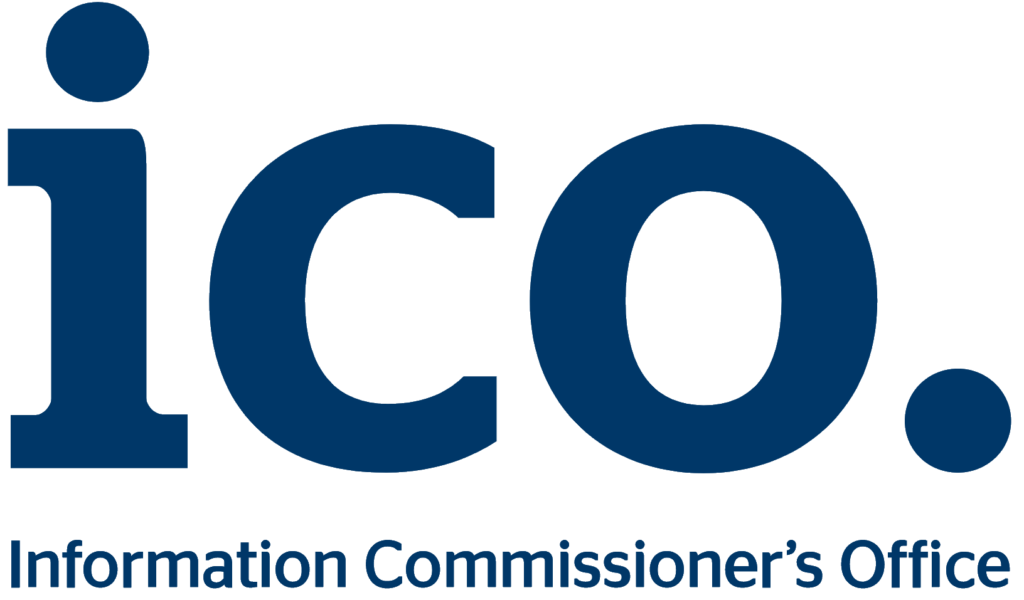Owning a home is a significant milestone in anyone’s life, but it is crucial to understand the type of property ownership you are entering into. One of the most common types of property ownership in the UK is leasehold. In this comprehensive guide, we will delve into residential leasehold lease agreements, their key components, and the rights and responsibilities that come with them.
We will also discuss common clauses and provisions, property management and service charges, ground rent and leasehold enfranchisement, and tips for negotiating a fair lease agreement. By the end of this Strangford Management article, you should have a solid understanding of leasehold lease agreements and be prepared to navigate the process with confidence.
Introduction to Residential Leasehold Lease Agreements
A residential leasehold lease agreement is a legal contract between a leaseholder (also known as a tenant) and a freeholder (also known as the landlord). The lease outlines the terms and conditions under which the leaseholder has the right to occupy and use a property for a specified period. In a leasehold arrangement, the leaseholder is typically demised the property’s internal spaces, whereas the freeholder retains ownership of the land and any common parts of the building, such as the roof, exterior walls, and communal areas.
Leasehold properties are common in the UK, especially in apartment buildings and some older houses that have been converted into flats. It is essential to understand the difference between leasehold and freehold ownership, as leasehold properties come with additional responsibilities and potential costs that may not be immediately apparent.
Key Components of a Leasehold Lease Agreement
A leasehold lease agreement is a legally binding document that sets out the terms and conditions of a leasehold property. Some of the key components of a lease agreement include:
- Lease Term: This is the length of time the lease will last, usually specified in years. Lease terms can range from short periods (such as 10 years) to long terms (such as 999 years). The remaining lease term can have a significant impact on the property’s value and your ability to obtain a mortgage or sell the property.
- Ground Rent: This is an annual payment made by the leaseholder to the freeholder for the use of the land on which the property sits. Ground rent can be fixed or subject to periodic increases, known as rent reviews.
- Service Charges: These are fees paid by leaseholders to cover the cost of maintaining and managing the building’s common areas, such as cleaning, gardening, and repair work. Service charges can vary widely depending on the property and the level of service provided.
- Insurance: Lease agreements often require the leaseholder to contribute to the cost of insuring the building, either through service charges or a separate insurance premium.
- Restrictions and Covenants: Lease agreements often include restrictions on how the property can be used, such as prohibiting pets or subletting without the freeholder’s consent. There may also be covenants requiring the leaseholder to maintain the property to a certain standard or obtain permission for alterations.
Understanding Leasehold Tenure and Lease Terms
Leasehold tenure refers to the period during which a leaseholder has the right to occupy and use a property. As previously mentioned, lease terms can vary significantly, with some leases lasting for just a few years and others extending for centuries. The length of the lease term can have a significant impact on your property ownership experience and the value of your investment.
When purchasing a leasehold property, it is crucial to consider the remaining lease term. A short lease term may make it difficult to obtain a mortgage, as lenders typically require a minimum number of years remaining on the lease (usually at least 70-80 years). Additionally, a short lease term can negatively impact the property’s value and make it challenging to sell, as potential buyers may also face difficulties obtaining a mortgage.
Lease extensions can be a solution to the problem of a short lease term, but they can be expensive and may require negotiations with the freeholder. It is essential to be aware of the process and costs involved in extending a lease before committing to purchasing a leasehold property.
Rights and Responsibilities of Leaseholders
As a leaseholder, you have certain rights and responsibilities that come with your property ownership. Some of these include:
- Right to Occupy and Use the Property: As a leaseholder, you have the right to occupy and use the property for the duration of the lease term, subject to the terms & conditions outlined in the lease agreement.
- Responsibility for Maintenance and Repairs: Leaseholders are typically responsible for maintaining and repairing the interior of the property, including fixtures & fittings. The freeholder is usually responsible for maintaining and repairing the exterior and common areas, but the costs may be passed on to leaseholders through service charges.
- Right to Extend the Lease: Leaseholders have a legal right to extend their lease, subject to certain conditions and the payment of a premium. This process can be complex and may involve negotiations with the freeholder, so it is essential to seek professional advice if you are considering a lease extension.
- Right to Enfranchise: In some cases, leaseholders have the right to purchase the freehold of their property or participate in a collective enfranchisement with other leaseholders in the building. This can provide greater control over the management and maintenance of the property and potentially reduce ongoing costs such as ground rent and service charges.
- Responsibility to Comply with Lease Terms: Leaseholders are legally required to comply with the terms and conditions outlined in their lease agreement, including payment of ground rent, service charges, and compliance with any restrictions or covenants.
Common Clauses and Provisions in Lease Agreements
Lease agreements can contain a variety of clauses and provisions that govern the rights and responsibilities of leaseholders and freeholders. Some common clauses and provisions you may encounter in a lease agreement include:
- Alienation Clause: This clause governs the leaseholder’s ability to sell, sublet, or otherwise transfer their interest in the property. It may require the leaseholder to obtain the freeholder’s consent before doing so, which cannot be unreasonably withheld.
- Alterations Clause: This clause may require the leaseholder to seek the freeholder’s consent before making any alterations or improvements to the property. In some cases, the freeholder may impose conditions or require payment of a fee.
- Forfeiture Clause: This clause allows the freeholder to terminate the lease and take possession of the property in certain circumstances, such as non-payment of ground rent or service charges or breach of the lease’s terms and conditions.
- Quiet Enjoyment Clause: This clause ensures the leaseholder’s right to occupy and use the property without interference from the freeholder or other parties, as long as the leaseholder complies with the terms & conditions of the lease agreement.
- Repairing Obligations Clause: This clause outlines the repairing obligations of the leaseholder and the freeholder. It typically requires the leaseholder to maintain the interior of the property to a certain standard and the freeholder to maintain the exterior and common areas.
It is essential to review these clauses and provisions carefully before signing a lease agreement to understand your rights and obligations fully. If you have any questions or concerns, it is advisable to seek legal advice.
Leasehold Property Management and Service Charges
Leasehold properties are typically managed by a property management company like Strangford Management, appointed by the freeholder. The property management company is responsible for managing and maintaining the building’s common areas, including cleaning, gardening, and repair work. They also collect service charges from leaseholders to cover the costs of these services.
Service charges can be a significant expense for leaseholders, and it is essential to understand what they cover and how they are calculated. Service charges can vary depending on the level of service provided and the condition of the building. It is essential to review the service charge budget and any historical accounts before purchasing a leasehold property to understand the costs involved fully.
Leaseholders have certain rights regarding service charges, including the right to request a summary of the costs incurred and the right to challenge the reasonableness of the charges through the First-tier Tribunal (Property Chamber). If you have any concerns about your service charges, seek legal advice.
Ground Rent and Leasehold Enfranchisement
Ground rent is an annual payment made by the leaseholder to the freeholder for the use of the land on which the property sits. Ground rent can be fixed or subject to periodic increases, known as rent reviews. In some cases, the ground rent may increase significantly over time or become onerous, impacting the property’s value and the leaseholder’s ability to sell or obtain a mortgage.
Leasehold enfranchisement is the process by which leaseholders can purchase the freehold of their property or participate in a collective enfranchisement with other leaseholders in the building. This can provide greater control over the management and maintenance of the property and potentially reduce ongoing costs.
The process of leasehold enfranchisement can be complex and may involve negotiations with the freeholder (See my podcast on the subject). It is essential to seek professional advice before embarking on this process to understand the costs and potential benefits fully.
Dealing with Disputes and Leasehold Valuation Tribunals
Disputes between leaseholders and freeholders can arise, and it is essential to understand the options available for resolving these disputes. In some cases, disputes can be resolved through negotiation or mediation, but in more serious cases, it may be necessary to seek legal advice and pursue legal action.
Leasehold valuation tribunals (LVTs) are independent bodies that can hear disputes between leaseholders and freeholders regarding service charges, lease extensions, and other matters. LVTs have the power to make binding decisions, and their decisions can be enforced through the courts.
If you have a dispute with your freeholder, seek legal advice.
Tips for Negotiating a Fair Leasehold Lease Agreement
When entering into a leasehold lease agreement, it is essential to negotiate the terms and conditions to ensure you are getting a fair deal. Some tips for negotiating a fair lease agreement include:
- Review the Lease Agreement Carefully: Before signing a lease agreement, it is essential to review the terms and conditions carefully. Ensure you understand your rights and obligations fully before committing.
- Consider the Lease Term: The length of the lease term can have a significant impact on the property’s value and your ability to obtain a mortgage or sell the property. Consider the remaining lease term carefully and negotiate an extension if necessary.
- Negotiate Ground Rent and Service Charges: Ground rent and service charges can be a significant expense for leaseholders. If applicable, consider negotiating the terms and conditions of these charges to ensure they are reasonable and affordable.
- Consider Leasehold Enfranchisement: If you are purchasing a leasehold property, consider the potential benefits of leasehold enfranchisement, including greater control over the management and maintenance of the property and potentially reduced ongoing costs.
- Seek Professional Advice: If you have any concerns or questions about the leasehold lease agreement or the leasehold ownership process, seek professional advice from a solicitor or other qualified professional.
Next Steps in the Leasehold Process
Leasehold ownership can be a complex and sometimes challenging process, but with the right information and advice, it is possible to navigate the process successfully. In this guide, we have covered the key components of a leasehold lease agreement, understanding leasehold tenure and lease terms, the rights and responsibilities of leaseholders, common clauses and provisions, property management and service charges, ground rent and leasehold enfranchisement, dealing with disputes and leasehold valuation tribunals, and tips for negotiating a fair leasehold lease agreement.
If you are considering purchasing a leasehold property or have concerns about your existing leasehold property, it is essential to seek professional advice to ensure you are getting a fair deal and fully understand your rights and obligations.
Read more…
- EWS1 Form Explained: Hidden Requirements Your Surveyor Won’t Tell You
- NHBC Cover Explained: Your Essential Guide for Leaseholders (2025)
- Ministers Set £30bn Cladding Crisis Deadline for 2029
- Service Charge Disputes Made Simple: Your Rights as a Leaseholder
- Breaking: Leasehold Reform Scraps Two-Year Wait Rule From January 2025




